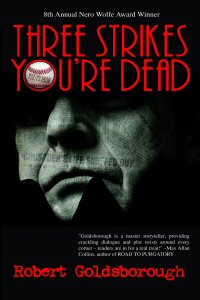
I was a police reporter only for a brief spell at the beginning of a journalism career that spanned 44 years, but it was long enough to create a permanent impression of the experience that enabled me to develop police reporter-protagonist Steve “Snap” Malek.
My five Malek mysteries from Echelon Press are set in Chicago between 1938 and 1949 and are set against the backdrop of real events, among them the Chicago Cubs’ classic 1938 pennant race, the early work on the atomic bomb at the University of Chicago in 1942, the tragic Naperville, IL. train wreck of 1946, and the historic 1948 presidential campaign between Harry Truman and Thomas E. Dewey.
Now my brief time as a police reporter took place in 1959, well after the time frame of the Malek stories, but the Chicago of the late ’50s was little changed from the two preceding decades. In my books, I felt comfortable describing the sprawling city, the newspaper business, and the police department that existed in a slightly earlier time.
My fictional “Snap” Malek (so nicknamed because he always wears a snap-brim hat) interacts with many historical figures, including Al Capone, actress Helen Hayes, baseball pitcher Dizzy Dean, star-crossed automaker Preston Tucker, newspaper magnate Col. Robert R. McCormick, President Truman, future Chicago Mayor Richard J. Daley, and filmmaker/cartoonist Walt Disney.
Malek, who possesses what other describe as “essential brashness,” is not intimidated by coming in contact with these and other well-known figures, which is one of the hallmarks of newspaper reporters. To them, famous persons are useful because the help make the story headline-worthy.
The Steve “Snap” Malek Series:
- “Three Strikes You’re Dead” (Set in 1938)
- “Shadow of the Bomb” (1942)
- “A Death in Pilsen” (1946)
- “A President in Peril” (1948)
- “Terror at the Fair” (1949)






